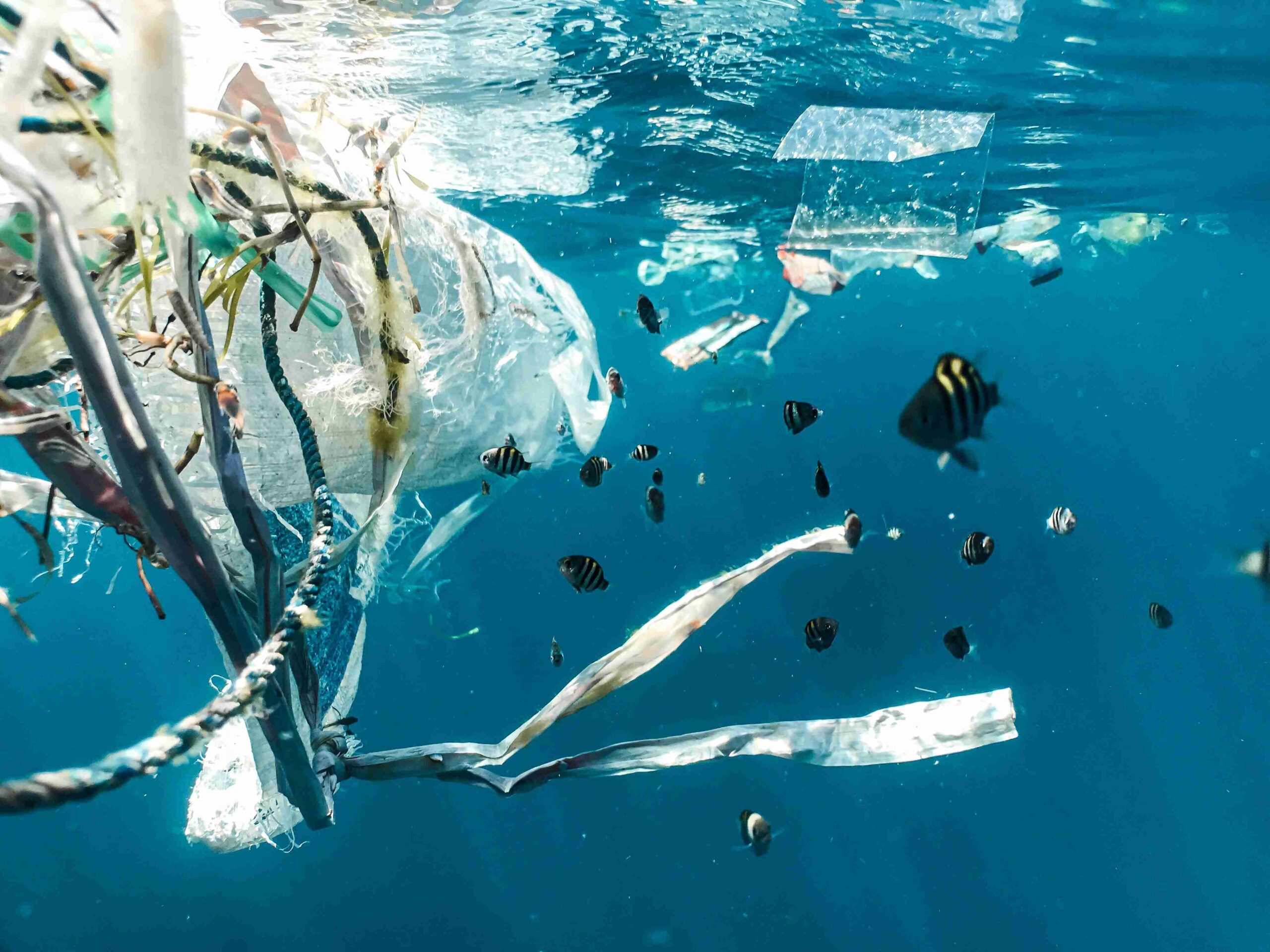Sea of plastic: how much plastic is in our oceans

In today’s post we are going to talk about seas of plastic and the problem of plastic packaging in the oceans. According to the Aquae Foundation, every second more than 200 kilos of plastic is thrown into the seas and oceans, while 70% of it goes to the seabed and 15% remains floating. Single-use plastic waste is the most common and currently 12.7 million tonnes of plastic are part of our oceans, damaging the ecosystem and marine animals. Much of this waste is difficult to see because it accumulates in the ocean gyres (rotating current systems) and, due to the action of waves, the larger fragments break up into smaller pieces called microplastics.
Damage caused to the sea by plastic waste
These are just some of the damages caused by inefficiently managed plastic waste dumped at sea, according to the European Parliament:
- Marine life: entanglement and ingestion by animals, habitat degradation and exposure to chemicals in plastics.
- Human health: exposure to chemicals through the food chain.
- Economy: estimated cost of between 259 and 695 million euros, mainly for the tourism and fisheries sectors.
- Climate: recycling 1 million tonnes of plastic is equivalent to taking 1 million cars off the road (in terms of CO2 emissions).
Furthermore, in 2018, the UN announced that only 9% of the plastic produced globally was recycled, compared to 12% incinerated and 79% that ended up in landfill or, directly, in the environment.
The most common plastic waste that one can find in the sea is the following:
- Fishing line.
- Bottles.
- Cutlery.
- Lighters.
- Glasses.
- Bags.
- Cigarette butts.
- And more.
How to reduce seas of plastic
So, what, or rather, what solutions could be taken to reduce this phenomenon? Well, the answer is not simple, but there are a series of guidelines that everyone should follow to reduce pollution of the oceans. These include using rubbish bins, sailing without dumping waste in the water, not consuming unnecessary products with excess packaging, reusing plastic bags, joining coastal clean-up actions and, of course, recycling.
In Spain, plastic recycling has experienced a positive evolution in recent years. The amount of tonnes of plastic recycled has increased from 506,365 tonnes (year 2014) to 893,739 tonnes (year 2019), representing an increase of 77%. Spanish plastic recyclers have been able to adapt their plants to recycle any flow, with Spain being one of the few European countries that can be said to have process overcapacity for final mechanical recycling of plastic waste. Spain achieved an overall plastics recycling rate of 43% in 2019, which despite having room for improvement, placed Spain as the country with the second best plastic recycling rate in the EU. This means that the transition to a circular model is underway, as long as economic policies support the sector and we all do our bit.
Seabin, the floating marine container
On the other hand, there are also different alternatives that add to the recycling chain and fight against this phenomenon, as is the case of “Seabin“, a floating marine container for collecting waste at sea. The device has the capacity to collect 90,000 bags, 35,700 cups, 16,500 bottles and 166,500 plastic utensils per year, and an annual average of between 1 and 1.4 tonnes of waste. The device works like a floating rubbish container that is placed in harbours at water level and, using a low-power electrical system, sucks water from the surface and passes it through a catch bag located inside. The Seabin pumps the water back into the harbour and leaves the waste trapped in the catch bag, which can hold up to 20 kg of waste, macro and micro plastics, micro fibres and even fuel, and can be emptied several times a day.
Awareness and sensitisation days
Another very interesting type of initiative is the environmental awareness and sensitisation days. In this case, projects such as “Patris Surf”, a non-profit surfing association, organises collections once a month on Zurriola Beach, San Sebastian. Anyone can participate in this project and it takes place during the morning. At the end of the collection, the club organises a kind of lunch for those who have done their bit for the ecosystem and have a good time.
Ultimately, the mass production of plastics has exploded in recent decades, which is why the philosophy of the circular economy must be regulated and applied. The development of the plastic recycling complex will help in a very positive way to reduce this pollution. And, despite the bad figures, it should be noted that in recent years there has been an increase in:
- The visibility of the problem
- The number of people tackling the problem
- The amount of data and research work
- The number of organisations and volunteers involved and the number of business initiatives, entrepreneurs, investment in R+D+I
- The search for alternatives and circular economy initiatives
We hope that with this post about the seas of plastics we have raised your awareness to take action against plastic waste. If you are an organisation that wants to recover and reuse this plastic waste, we recommend you to access our platform for buying and selling scrap materials.